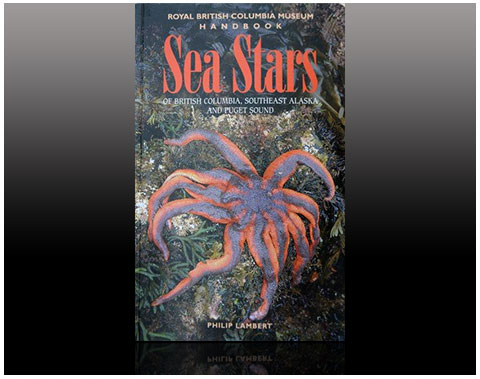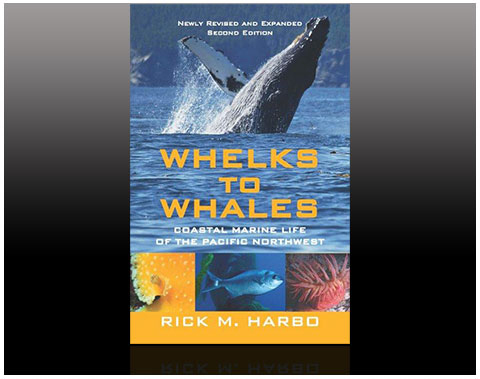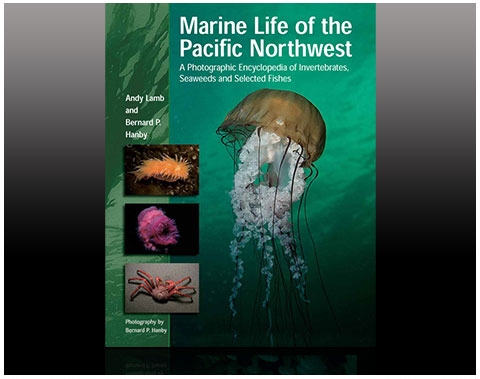
Acknowledgements
I have drawn most of the factual details about Pacific coast sea stars from SEA STARS OF BRITISH COLUMBIA, SOUTHEAST ALASKA AND PUGET SOUND by Philip Lambert (UBC Press, 2000). Basic identifying characteristics, taxonomy, biology, geographical range and depth distributions are as noted in Phil's comprehensive book, except where they are supplemented by my observations. Phil's book contains a wealth of references should you wish to research sea stars further.
Dive buddy, videographer and web designer Geoff Grognet designed the attractive and user-friendly website. I would also like to thank dive buddies Bernie Hanby, Rick Harbo, Andy Lamb, Tom Sheldon, Doug Swanston and Pauline Ridings, who shared their sea star observations. Roger Clark, Chris Mah and Chris Wells provided advice on specific pages.
All photographs on this site are © Neil McDaniel, except as otherwise noted. Note that these images are not intended for free use in the public domain. Those who wish to use them must contact the copyright holder for permission.
If sea stars and their spiny kin really interest you I highly recommend Dr. Chris Mah's eclectic blog: www.echinoblog.blogspot.com
Two other great sources of information about west coast sea creatures are WHELKS TO WHALES by Rick Harbo and MARINE LIFE OF THE PACIFIC NORTHWEST by Andy Lamb and Bernard P. Hanby. Consult these books to get more information about other species mentioned in this website. Both are Harbour Publishing titles and available from dive shops, bookstores and on-line sources.
MARINE LIFE OF THE PACIFIC NORTHWEST is also available on-line to subscribers at: http://knowbc.com/knowbc/What-is-Marine-Life-of-the-Pacific-Northwest
Summary
I hope that SEA STARS OF THE PACIFIC NORTHWEST will give you a new appreciation for these fascinating and very successful marine invertebrates. Their variety, abundance and range of habitats throughout the Pacific Northwest are quite remarkable.
Interestingly, sea star taxonomists (scientists who study the classification and relationships of species) are still trying to sort out the status of some very closely related stars, especially in the genera Henricia and Leptasterias. There will undoubtedly be several new species described in the next few years.
Early taxonomists had to rely on conventional microscopes and often never saw a live specimen of the sea star they examined. They described them based on the morphology of a dried skeleton collected in a trawl catch. Their modern counterparts have much more powerful tools at their command. Scanning Electron Microscopy can provide incredibly detailed images at magnifications 250 times greater than conventional light microscopy. And genetic sequencing can reveal the essential make-up of species. Indeed, these technologies have spurred a renewed interest in taxonomy.
Observant beach walkers and, especially, divers have the unique opportunity to witness seldom-seen behaviours and other unusual aspects of sea star lives. In recent years, sharp-eyed naturalists and underwater photographers have added significant new discoveries, greatly increasing our overall knowledge.
If you have specific questions about PNW sea stars, please send them along. I'll try to come up with some answers or at least direct you to an expert who can. Use the form below to contact me.
Neil McDaniel



SEA STARS OF BRITISH COLUMBIA, SOUTHEAST ALASKA AND PUGET SOUND by Philip Lambert is the most comprehensive source of information about PNW sea stars.
WHELKS TO WHALES by Rick Harbo provides descriptions and colour photos of most PNW marine creatures.
MARINE LIFE OF THE PACIFIC NORTHWEST by Andy Lamb and Bernard Hanby is an excellent photographic encyclopedia of invertebrates, seaweeds and selected fishes.
3 - 3
Previous
NEXT
Your Comments & Questions Are Welcome
INTRODUCTION | ABOUT SEA STARS | BIOLOGY | SPECIES | PREDATORS / PREY | SEA STAR WASTING DISEASE | ACKNOWLEDGEMENTS | FIELD GUIDE | VIDEO
Copyright © 2018 All rights reserved.